Η διαχρονικότητα του πολύτροπου Οδυσσέα μας ώθησε να επιλέξουμε και εν τέλει να αποτυπώσουμε σε εικόνες την πολύπαθη μυθολογία που χτίστηκε, ανά τους αιώνες, γύρω από το όνομα του. Διαμοιράζοντας, στους φιλαίτερους της Ελληνικής Κοινότητας του Cardano, ένα μικρο κομμάτι από τις πολύαινες ιστορίες της ζωής του Οδυσσέα, αποσκοπουμε στην πολυκερδή μάθηση μέσω της αναζήτησης.
Μάθετε την ιστορία πίσω από κάθε NFT – δείτε περισσότερα
- The hunting of the wild boar
- The gift of Iphitos
- The suitors of beautiful Helen
- Race for Penelope
- The recruitment of Odysseus
- Sail to Skyros
- The trick on Achilles
- Departure for Troy
- Nestor-Odysseus-Edomeneas
- Convincing Agamemnon
- Wrathful Achilles
- The Thracian camp
- The statue of Athena
- Godmade shield
- Achilles armor
- Trojan horse
- Destruction of Troy
- The land of Cicones
- The land of the Cyclopes
- The land of the Lotus-Eaters
- The Aeolian bag
- The island of Lestrygonians
- The island of the witch Circe
- The oracle Tiresias in Hades
- The Sirens
- Skylla and Harivdis
- The island of the Sun
- The island of Calypso
- The palace of king Alkinoos
- Meeting Eumaeus
- Meeting Telemachus
- Meeting Eyrykleia
- Meeting the Faithful dog Argos
- Fighting the beggar Iros
- Penelope brings the bow
- The murder of the Suitors
- Odysseus and Penelope
- The trip to Thesprotia
- Odysseous and Tilegonos
- The death of Odysseus

1. The hunting of the wild boar
The story takes place on Mount Parnassus, where Odysseus, still young and unmarried, went on a hunting trip with his Grandfather Autolykos. During the hunt, they encountered a wild boar, which Odysseus killed with his spear. However, the boar left a scar over Odysseus’ knee, the same scar that was later recognized by his old maid, Eurykleia, when she was washing his feet upon his return to Ithaca.

2. The gift of Iphitos
According to the poem, Iphitos was the son of Eurytus, who was the master of Heracles in archery. When Iphitos met Odysseus, he gave him his bow, which was a gift from his father. In return, Odysseus gave Iphitos a spear. However, they never saw each other again, as Iphitos was killed by Heracles, who seized his horses in defiance of the hospitality laws.

3.The suitors of beautiful Helen
The Suitors of Helen are those kings who came from many kingdoms of Greece to compete for the hand of the Spartan princess Helen, daughter of Zeus and Leda. Odysseus was one of the Greek kings and played a significant role in resolving a conflict between the suitors. In order to avoid bloodshed amongst the gathered suitors, Odysseus came up with a solution. He suggested that all suitors should be obliged to swear that if in the future it becomes necessary, they will protect the king chosen by Helen.

4. Race for Penelope
There are two versions of the marriage between Odysseus and Penelope. The first version, which is also described by Homer, wants Odysseus to defeat his rivals in a race announced by Icarius, father of Penelope. According to the second version, Odysseus, in return for his assistance to Tyndareus at Helen’s wedding, received the daughter of his brother Icarius.

5. The recruitment of Odysseus
According to Homer, Odysseus knew from an oracle that he would return after 20 years and that is why he did not want to participate in the expedition. To get out of the draft he pretended to be mad, but his deception was discovered.
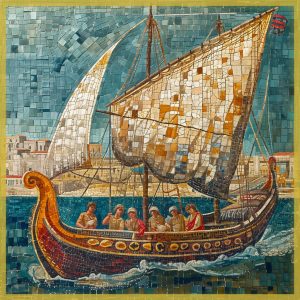
6. Sail to Skyros
As Odysseus was now a member of the expeditionary force, Agamemnon turned to Achilles (who was not Helen’s suitor), because it had been said that Troy would not fall without him. Odysseus was sent to Skyros, to the palace of Lycomedes, to secure Achilles’ participation.
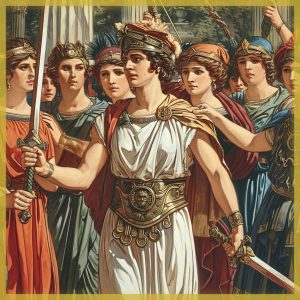
7. The trick on Achilles
Goddess Thetis, advised her son Achilles to dress in women’s clothes and hide among the women of the court, so as not to be forced to participate in the war. Odysseus, unable to locate Achilles, asked, before departing for the return , to be allowed to make gifts to the women of the court. He took out some gold jewellery as well as a sword, a staff and a shield. All the women were interested in the jewels except one.

8. Departure for Troy
The Trojan War was a legendary conflict in Greek mythology that took place around the 12th or 13th century BCE. The Achaean forces gathered in Aulis as were described in detail in the Catalogue of Ships, in the second book of the Iliad. They consisted of 28 contingents from mainland Greece, the Peloponnese, the Dodecanese islands, Crete, and Ithaca, comprising 1186 Penteconters, ships with 50 rowers. Thucydides says that according to tradition there were about 1200 ships, and that the Boeotian ships had 120 men, while Philoctetes’ ships only had the fifty rowers, these probably being maximum and minimum. These numbers would mean a total force of 70,000 to 130,000 men.
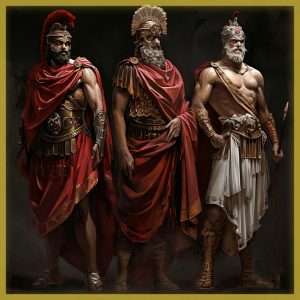
9. Nestor Odysseus and Edomeneas
In the Iliad, Odysseus is presented by Homer as a valiant warrior, a wise king and a resourceful leader. His views on many issues were adopted by the other leaders as they all respected him. Moreover, the trio of Nestor, Odysseus and Idomeneas were recognized as the most trusted advisors.
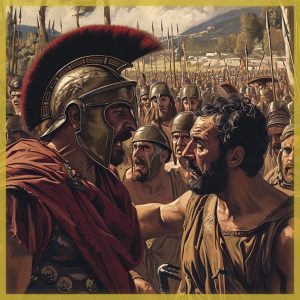
10. Convincing Agamemnon
When Agamemnon, to test the morale of the Achaeans, announces his intentions to depart Troy, Odysseus restores order to the Greek camp. Later on, after many of the heroes leave the battlefield due to injuries (including Odysseus and Agamemnon), Odysseus once again persuades Agamemnon not to withdraw.
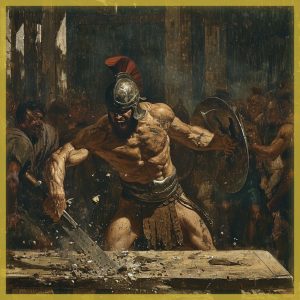
11. Wrathful Achilles
After Patroclus is slain, it is Odysseus who counsels Achilles to let the Achaean men eat and rest rather than follow his rage-driven desire to go back on the offensive—and kill Trojans—immediately. Eventually (and reluctantly), he consents. Odysseus has traditionally been viewed as Achilles’ antithesis in the Iliad while Achilles’ anger is all-consuming and of a self-destructive nature, Odysseus is frequently viewed as a man of the mean, a voice of reason, renowned for his self-restraint and diplomatic skills.
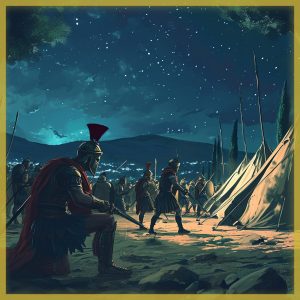
12. The Thracian camp
Odysseus and Diomedes, two of the best Achaean warriors, sneak into the Trojan camp at night to spy and kill their enemies. They encounter a Trojan scout named Dolon, who tells them about the newly arrived Thracian allies, led by King Rhesus. Odysseus and Diomedes decide to raid the Thracian camp, where they kill Rhesus and twelve of his men, and steal his chariot and horses.
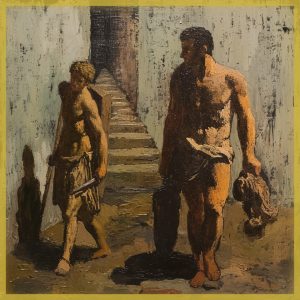
13. The Statue Of Athena
Odysseus and Diomedes sneaked into Troy and took the Palladium from the temple of Athena, which was guarded by a serpent. The Palladium was a wooden statue that fell from the sky, and it was believed that Troy could not be conquered as long as it possessed the Palladium. By stealing it, Odysseus and Diomedes weakened the Trojans’ morale and ensured the eventual victory of the Greeks.
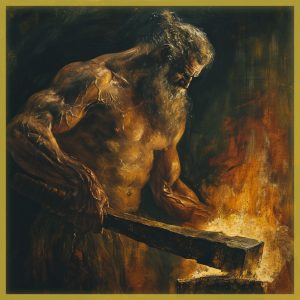
14. Godmade shield
One of his feats in the war was winning, the achilles’ shield and armor that forged by God Ephestos himself, in a foot race against other Achaeans. The race was part of the funeral games for Patroclus, the friend of Achilles, who was killed by Hector. Odysseus and Ajax were the last two contestants, and they ran neck and neck until the end. Odysseus prayed to Athena, the goddess of wisdom and war, to help him win. She made Ajax slip on some cow dung, and Odysseus crossed the finish line first.
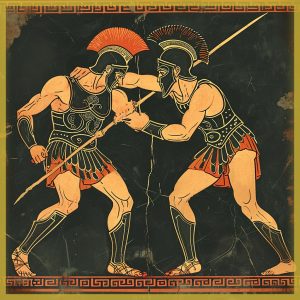
15. Achilles armor
Odysseus and Ajax the Telamonian, two of the most prominent Greek heroes in the Trojan War, competed in a wrestling match as part of the funeral games for Patroclus, the friend of Achilles. The match was very close, as both warriors were strong and skilled. They grappled with each other, trying to throw their opponent to the ground. However, neither of them could gain the upper hand, and they ended up in a draw. The judges, who were influenced by Athena, the patron goddess of Odysseus, decided to award both of them equal prizes.
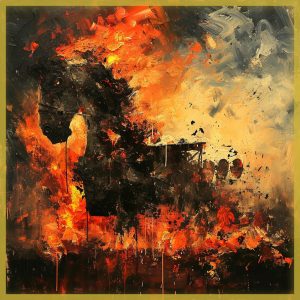
16. Trojan horse
The Trojan Horse was a wooden structure that the Greeks used to trick the Trojans and win the Trojan War. The horse was built by Epeius with the help of Athena, the goddess of wisdom. Odysseus was the one who came up with the idea of the Trojan Horse. The Greeks pretended to leave the horse as a gift to Athena and sailed away, but they actually hid some of their best warriors inside the horse, including Odysseus.
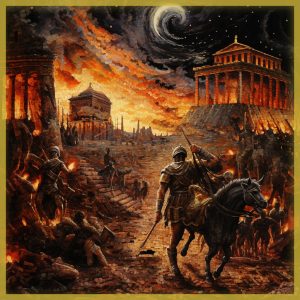
17. Destruction of Troy
The war lasted ten years and ended with the destruction of Troy. Odysseus, the wise king of Ithaca, played a significant role in the war, including the capture of Troy by means of the wooden horse. The exact details of the destruction of Troy are not known, but it is believed that the city was burned down by the Achaeans (Greeks).
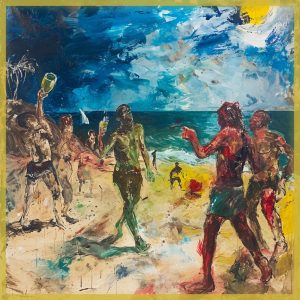
18. The land of Cicones
Setting sail with twelve ships from Troy for the return, the first stop was in the land of the Cicones. After the raid on the city of Ismara, they stole, along with other stolen goods, the sweet wine of the Cicones, which they consumed and got drunk. The Cicones took revenge on Odysseus and his companions, killing many of them and forcing the rest to flee their country by night.
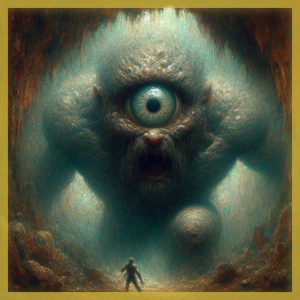
19. The land of the Cyclopes
Polyphemus was the son of Poseidon, the god of the sea, and a one-eyed giant who lived on an island with his fellow cyclopes. According to the Odyssey, Odysseus and his men landed on Polyphemus’s island on their way back home from Troy. They entered his cave and ate his food, hoping for his hospitality. However, Polyphemus returned and trapped them inside the cave, blocking the entrance with a huge boulder. He then proceeded to eat some of Odysseus’s men, while keeping the rest as prisoners.
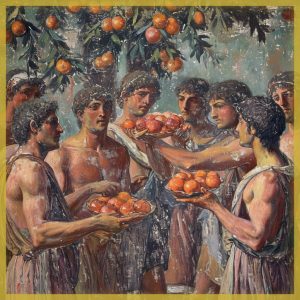
20. The land of the Lotus-Eaters
The lotus-eaters were a race of people who lived on an island where the lotus plant grew. The lotus fruit was a narcotic that made anyone who ate it forget their home and want to stay on the island forever. Some of Odysseus’ men ate the lotus fruit and lost their desire to return to Ithaca. Odysseus had to drag them back to the ship and tie them up to prevent them from staying with the lotus-eaters.
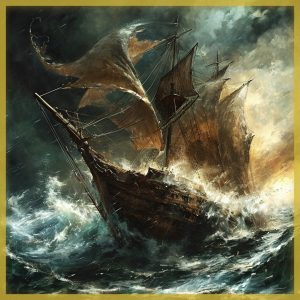
21. The Aeolian bag
The Aeolian bag was a gift from Aeolus, the god of the winds, who lived on a floating island with his family. Aeolus helps Odysseus by commanding the west wind to lead his ship home. He also gave him a bag containing all the other winds, which he told him not to open. However, when Odysseus was close to Ithaca, he fell asleep and his curious crew opened the bag, thinking it was full of treasure. The winds escaped and blew them back to Aeolia, where Aeolus refused to help them again, believing that they were cursed by the gods.
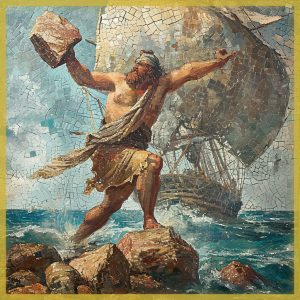
22. The island of Lestrygonians
The island of laestrygonians was inhabited by a race of cannibalistic giants, who attacked and devoured many of Odysseus’s men. Antiphates and his fellow laestrygonians hurled huge rocks from the cliffs, smashing the ships and killing the sailors. They then speared the survivors like fish and dragged them to their feast. Only Odysseus and his ship managed to escape, as they were outside the harbor. They sailed away, mourning their lost comrades.
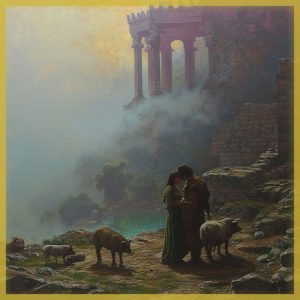
23. The island of the witch Circe
Circe was an immortal goddess who lived on the island of Aeaea and had the power to transform people into animals with her magic. Odysseus and his men landed on Circe’s island after leaving the island of the wind god Aeolus. Circe invited some of Odysseus’s men to her palace and turned them into pigs with a potion. Odysseus, with the help of the god Hermes, resisted Circe’s spell and threatened her with his sword. Odysseus stayed with Circe for a year, enjoying her company and her luxuries. He almost forgot his mission to return to his home and his wife Penelope. His men reminded him of their goal and he asked Circe to let them go.
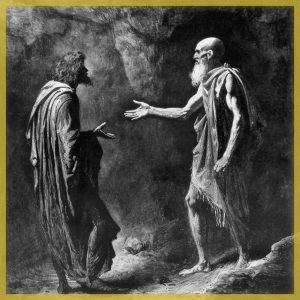
24. The oracle Tiresias in Hades
Tiresias was a blind prophet of Apollo, who had the gift of foresight and the ability to communicate with the dead. Odysseus consults the shade of Tiresias in the underworld, who predicts that Odysseus will suffer much hardship on his journey home, but if he can restrain himself and his companions when they reach the Thrinacian island, he may be able to make it back to Ithaca.
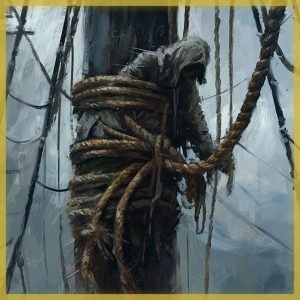
25. The Sirens
One of Odysseus most famous encounters was the Sirens, who were human-like beings with alluring voices that lured sailors to their deaths. In the Odyssey, Homer describes how Odysseus and his crew sailed past the Sirens’ island by plugging their ears with beeswax and tying Odysseus to the mast of the ship so he could hear the Sirens’ song without being tempted to steer the ship towards them.

26. Skylla and Harivdis
Another perilous encounter that Odysseus had was with Scylla and Charybdis. Scylla was a supernatural female creature with 12 feet and six heads on long snaky necks, each head having a triple row of shark like teeth, while her loins were girdled by the heads of baying dogs. From her lair in a cave, she devoured whatever ventured within reach, including six of Odysseus’s companions. Charybdis, on the other hand, was a whirlpool that lurked on the opposite shore.
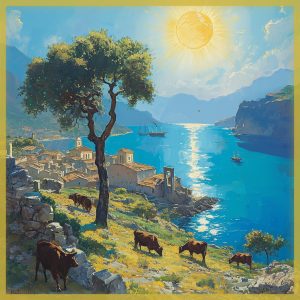
27. The island of the Sun
One of Odysseus’ obstacles is the island of the Sun, also known as Thrinacia. According to the poem, the island is home to the god Helios, who owns 700 cattle and livestock, each of which he stares at from sunrise to sunset. Odysseus and his crew land on the island and are warned by the god Circe not to harm the cattle. However, Odysseus’ crew disobeys him and slaughters the cattle of the Sun. As a result, the god Helios asks Zeus to punish Odysseus and his men.
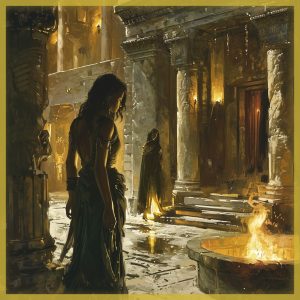
28. The island of Calypso
Calypso is a nymph in Greek mythology who falls in love with Odysseus, the king of Ithaca and one of the Greek heroes of the Trojan War. According to Homer’s Odyssey, Calypso detained Odysseus on her island, Ogygia, for seven years, trying to make him forget Ithaca and take him as her immortal husband.

29. The palace of king Alkinoos
King Alcinous is the ruler of the Phaeacians, a legendary people who live on the island of Scheria. In the Odyssey, Alcinous welcomes Odysseus to his palace and hosts him for several days. During his stay, Odysseus tells Alcinous and his court about his adventures and his journey home. Alcinous is impressed by Odysseus and offers to help him return to Ithaca. This is also the point from which the narrative of the epic poem begins.
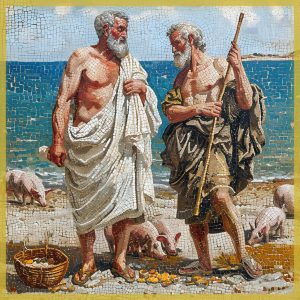
30. Meeting Eumaeus
In Book 14 of The Odyssey, Odysseus meets the swineherd Eumaeus, who is one of his loyal subjects. Eumaeus offers Odysseus food and shelter, not knowing that he is his king. Odysseus reveals his true identity to Eumaeus and they share stories of their past. Eumaeus tells Odysseus about his life as a slave and how he came to work for his father, Laertes. Odysseus tells Eumaeus about his journey home and his plans to reclaim his throne from the suitors who have taken over his palace.
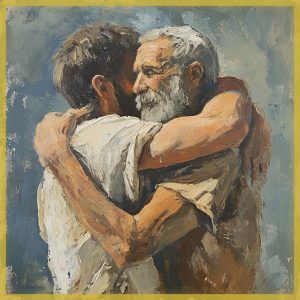
31. Meeting Telemachus
Telemachus is the son of Odysseus and Penelope. When Telemachus reached manhood, he visited Pylos and Sparta in search of his wandering father. On his return, he found that Odysseus had reached home before him. When he arrived in Ithaca, he discovered that Odysseus was in Eumaeus’s hut and then accompanied him to the palace, where the next day, recognizing each other, they exterminated Penelope’s suitors. After his father’s restoration to the throne, Telemachus fled to distant places, in order that an oracle predicting the death of Odysseus by his son might not be fulfilled.
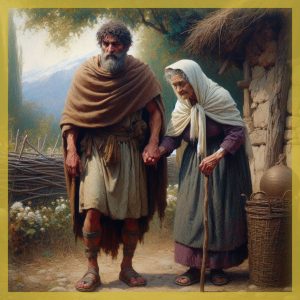
32. Meeting Eurykleia
In Book 19 of The Odyssey, Eurycleia the wet-nurse, bathes Odysseus who is disguised as a beggar, and recognizes him by a scar just above his knee, which he got from a boar while boar hunting with his grandfather Autolycus. Odysseus stops her from telling Penelope or anyone else (except Telemachus, who already knew) in the house of his true identity.
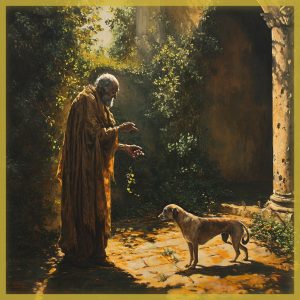
33. Meeting the Faithful dog Argos
As they were speaking, a dog that had been lying asleep raised his head and pricked up his ears, this was Argos.
-Odysseus “Eumaeus, what a noble dog that is over yonder on the manure heap: his build is splendid; is he as fine a fellow as he looks, or is he only one of those dogs that come begging about a table, and are kept merely for show?”
-Eumaeus “This dog belonged to him, who died in a far away country. If he were what he was when Odysseus left for Troy, he would soon show you what he could do. There was not a wild beast in the forest that could get away from him when he was once on its tracks. But now he has fallen on evil times, for his master is dead and gone, and the women take no care of him.”
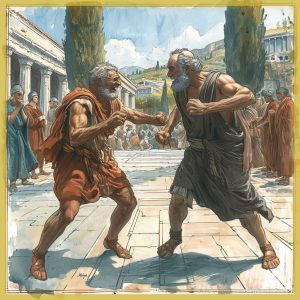
34. Fighting the beggar Iros
Iros the beggar insulted Odysseus, because the latter was disguised as a beggar and saw him as a competitor, The suitor Antinous realized that they were fighting and called the other suitors to see them and have fun. He told them that whoever won would always eat of their food, and they would never let any other beggar in. Odysseus made the suitors swear that they would not help Iro in this fight.
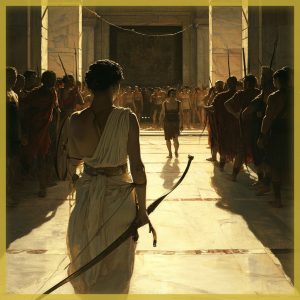
35. Penelope brings the bow
Penelope brings Odysseus’ bow to the suitors in Book 21 of Homer’s Odyssey. She retrieves the bow, several arrows, and twelve axe heads from the upper chamber of the palace and presents them to the suitors in the main hall. Penelope then challenges the suitors to shoot an arrow through twelve axe heads aligned in a straight row using Odysseus’s renowned bow. The suitors fail to complete the challenge, and Odysseus, disguised as a beggar, successfully strings the bow and reveals his true identity to Penelope.
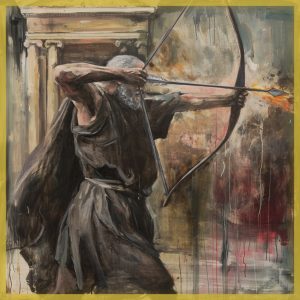
36. The murder of the Suitors
Odysseus who wins the contest, proceeds to slaughter the suitors with help from Telemachus, Athena and the slaves Eumaeus the swineherd and Philoetius the cowherd. In Book 22 of Odyssey, Odysseus shoots an arrow through the throat of Antinous, the ringleader of the suitors, before the suitors realize what is happening. The suitors become terrified and try to escape, but Odysseus and his men kill them all. After the battle, Odysseus spares only two of the suitors’ unwilling participants, the minstrel Phemius and the herald Medon.
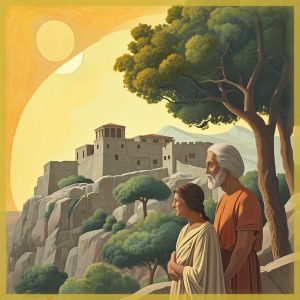
37. Odysseus and Penelope
Penelope finally accepts that he truly is Odysseus, a moment that highlights their homophrosýnē (“like-mindedness”). Homer implies that from then on Odysseus would live a long and happy life together with Penelope and Telemachus, wisely ruling his kingdom, and enjoying wide respect and much success.
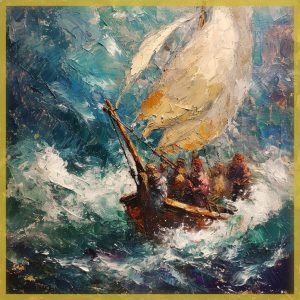
38. The trip to Thesprotia
Odysseus went to Thesprotia to seek help from King Alcinous after being stranded on the island of Ogygia for seven years. He was seeking a way to return to his home in Ithaca. In Thesprotia, he married the king’s daughter, Callidice, and became the ruler of the kingdom after the king’s death. He led the Thesprotians in a war against the Brygoi but lost the battle because Ares was on the side of the Brygoi. Athena went to support Odysseus by engaging the war god in another confrontation until Apollo separated them. When Callidice died, Odysseus returned home to Ithaca, leaving their son, Polypoetes, to rule Thesprotia.
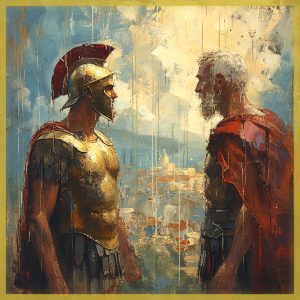
39. Odysseous and Tilegonos
When Telegonus had grown to manhood, his mother Circe sent him in search of his father Odysseus, who by this time had finally returned to Ithaca from the Trojan War. Shipwrecked on Ithaca by a storm, Telegonus mistakenly believed that he had made landfall on Cercyra (Corfu) and, assailed by hunger, began plundering the island. Odysseus and his oldest son, Telemachus, defended their city and, in the ensuing melée, Telegonus accidentally killed his father with a lance tipped with the venomous spine of a stingray.
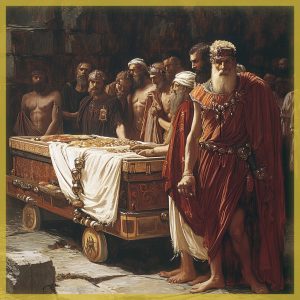
40. The death of Odysseus
From time to time, many writers have been inspired by the story of Odysseus and have modified it more or less. The classical Greek writers who dealt with Odysseus (Euripides, Pindar and Sophocles) respected him for his cunning and cleverness and presented him as an honest warrior and king. Roman writers were divided, as some criticized him (Virgil, Statius) and some honored him (Horace, Ovid). Later writers who dealt with him include Calderon, Dante, Giovanni Pascoli, Tennyson, Nikos Kazantzakis and James Joyce. As we can see, the epic story of Odysseus has been a motivation for all of us romantics, in our work, in our personal lives, and in many other aspects of our everyday life. There is no information about the death and burial of Odysseus, but how to mock and bury an immortal?
